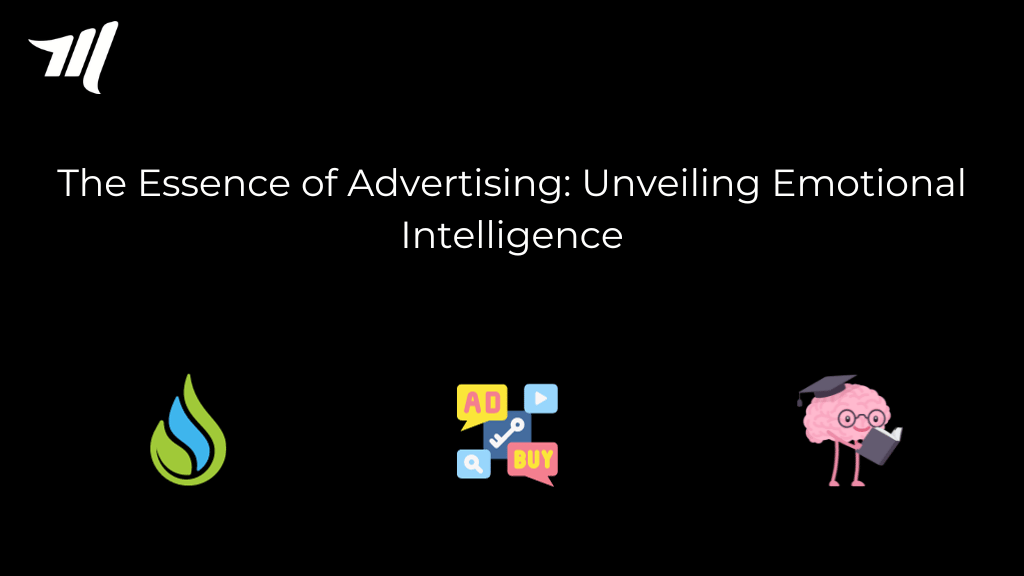Emotional intelligence (EI) was once limited to human interactions, but it is now a hidden ingredient that marketers are using in their digital advertising efforts to connect emotionally with consumers. The author reveals how emotional intelligence is being used by marketers to effectively engage with their target audience through emotionally charged digital advertisements.
In the ever-changing field of digital advertising, a new star known as Emotional Intelligence (EI) has emerged. Emotional intelligence, which was formerly limited to human interactions, is now the secret ingredient that marketers are putting into their digital marketing campaigns to generate emotional resonance with customers. Today, we’ll look at how marketers are efficiently employing emotional intelligence to engage with their target audience through heartfelt digital commercials.
The Dance of Emotional Intelligence and Digital Advertising
Okay, imagine this scenario: while you lazily go through your social media feed, out of nowhere, digital advertising appears that gently tugs at your heartstrings, eliciting unexpected feelings. This is far from a coincidence since this is the mastery of EI. In current marketing circumstances, corporations have wisely recognized the enormous potential of Emotional Intelligence. This includes the ability to understand and navigate one’s own emotions as well as those of others. Now you’re going to estimate the outcome? As a result, commercials are carefully crafted to strike a deep chord with customers.
Empathy in Action
Empathy is at the heart of emotional intelligence, and marketers use it to produce advertisements that reflect the vast range of human experiences. They are changing away from overwhelming consumers with showy product features and conveying honest tales that elicit empathy. Insurance Samadhan is an excellent example; their services exemplify sensitivity, advocating for disgruntled clients. They negotiate complicated insurance landscapes, assuring proper claims and premium refunds, connecting with customers, and putting them in contact with their rightful money.
Personalization for a Deeper Bond
Brands no longer rely on one-size-fits-all advertising. Brands are now leveraging data-driven insights to personalize their advertisements, adapting them to specific interests and behaviors. This personalized approach shows a deep grasp of consumers’ wants and desires, creating an emotional connection that standard commercials typically lack. Baby Forest’s rakhi marketing was successful in creating meaningful relationships with a tailored approach. This campaign demonstrated how customization improves relationships, making interactions more meaningful and memorable.
The Power of Relatability
Emotional intelligence encourages companies to develop content that portrays relatable events, difficulties, and goals. Sunova is a brand that recognizes the importance of relatability. Their products use natural, science-backed substances and are intended to address client wants and concerns. For instance, their website has a “Customer Stories” section that highlights satisfied customers. Brands may demonstrate emotional intelligence and commitment to positive change by responding to customer stories and providing solutions.
Eliciting Positive Emotions
Positive emotions are a goldmine for advertising, and emotional intelligence helps them achieve this goal. Brands understand that generating joy, nostalgia, or inspiration has a long-lasting influence on consumers. Consider Birkenstock’s Barbie ad, which effectively combines the comfort of their classic footwear with the nostalgic appeal of Barbie. This blend evokes good emotions and resonates with those who enjoy both timeless brands, resulting in sentiments of excitement and nostalgia.
Authenticity Fosters Connection
Authenticity is essential in today’s skeptical world. Emotional intelligence suggests that brands should be honest in their aims. Consumers are adept at detecting dishonesty. Swiss Beauty promotes body acceptance and authentic beauty. By harmonizing their ideals, they foster trust and provide a solid emotional basis.
Challenges and Future Possibilities
While the combination of emotional intelligence and digital advertising is transformational, difficulties remain. Maintaining the correct emotional balance without appearing manipulative may be challenging. Brands must constantly adjust their strategy due to the fast growth of technology. However, the possibilities are enormous. As AI and machine learning improve, companies may get deeper insights into customer emotions, leading to more focused and effective advertisements.





